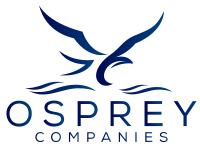Cash on Cash?
Cash on Cash is a term used in commercial real estate investing that refers to the rate of return of the total cash invested to on the total cash earned. Another way of describing it would be the rate of return for an investor to get his or her money paid back in full.
Someone coming from the banking side of the real estate world may not be familiar with term “Cash on Cash”. This is because the banking side focuses on debt service coverage ratio, and rightfully so. The debt service ratio indicates how well the property can cover (or pay for) the debt, based on their income less their expenses. Meaning, whether or not the property should be able to pay back the loan. While the bank certainly cares that a profit is made after debt service, that is an ancillary concern.
Understandably, Cash on Cash is a term commonly used by investors in commercial real estate. Investors want to know how long it should take for them to recoup their investment, as a determining factor in whether they should consider investing in a property to begin with.
The Calculation
Let’s look at the formula for Cash on Cash. It is the Annual Pre-Tax Cash Flow divided by the Total Cash Invested. To be clear, the “Pre-Tax” in “Annual Pre-Tax Cash Flow” is referring to income taxes and not property taxes. Another way to describe it would be Income less Expenses less Debt Service (which is the amount you are paying the bank for the loan), divided by the Cash Outlay. In short, it’s Net Cash Flow divided by Cash Invested.
Let’s say that annual revenue from the business is $70,000 and the annual expenses are $50,000. The annual debt repayment, including principal and interest, is $5,000. Therefore the calculation of Annual Pre-Tax Cash Flow is $70,000 (income) minus $50,000 (expenses) minus $5,000 (debt). That leaves $15,000 as the Net Cash Flow. At closing you gave $65,000 in a down payment and paid $10,000 in fees. Therefore, your Total Cash Invested is $75,000. The Cash on Cash calculation would be 15,000/75,000= .20. That’s a 20% Cash on Cash return, which means you would pay yourself back that $75,000 in 5 years (since 20% times 5 is 100%).
This calculation gets slightly trickier when you are evaluating an expansion on an existing property. In that case, you want to ensure that the property can cover the debt service (including any new debt with the existing debt) in the current year, which would be the construction and lease up period. You wouldn’t even look at the Cash on Cash return for that year. The next year and forward, though, you would want to evaluate the Cash on Cash Return based on the projected income, expenses, and debt service to determine whether the property will be profitable enough to satisfy your standards.
What is a good Cash on Cash rate?
There is no specific rule of thumb for what constitutes a good Cash on Cash return rate. The preferred Cash on Cash rate changes based on the type of property, and changes year over year based on the current economy. Many resources will tell you 8%-12% is good. Given that the average rate of return on the stock market hovers around 8%, anything above that could be advantageous-.
In the end, Cash on Cash shouldn’t be the only metric used in the commercial real estate evaluation process, whether that be for a new deal or an expansion on an existing property. There are other metrics, including (but not limited to) NOI, IRR, cap rate, and LTV, that are just as important but for different reasons. However, Cash on Cash will give you a good idea on how well your money will be working for you on that particular property.
